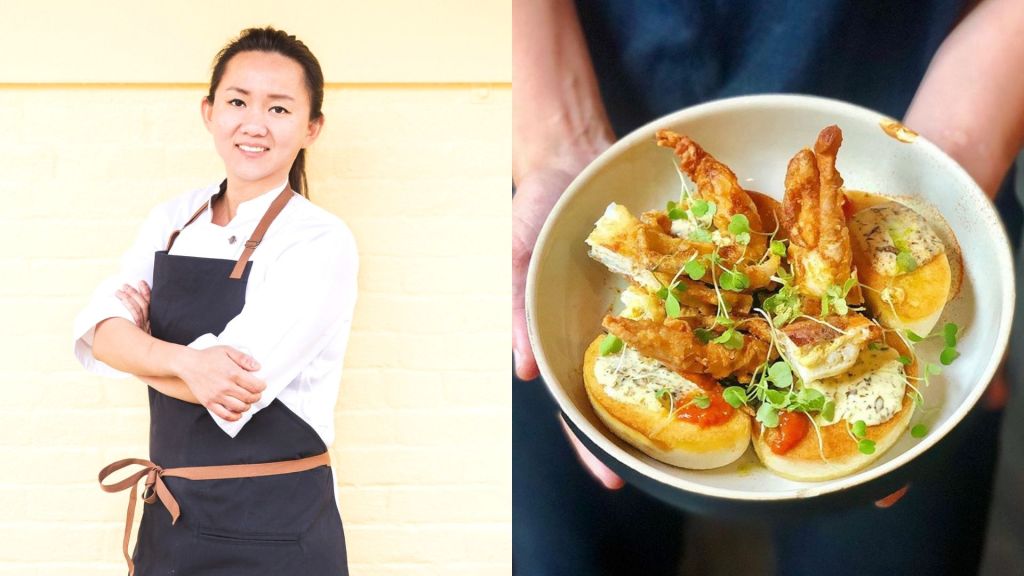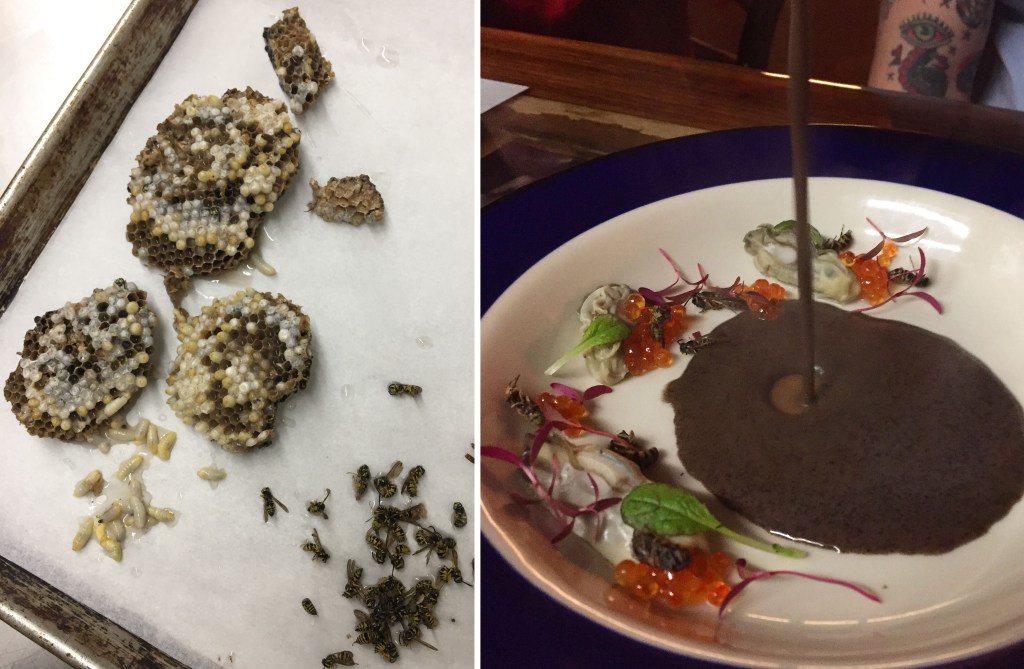Jenny Gao isn’t your average Sichuanese chef. You might find her cooking creamy tofu cubes topped with fresh pieces of uni, or working on arancini inundated with mapo spices. She likes her tiger shrimp with kung pao-like flavors and soy sauce made with cassia bark, dried mushrooms, star anise, soy, and brown sugar. She crafts her own noodles and sauces entirely from scratch, drawing from her childhood and connection to Chengdu, the capital of the Sichuan province of China and certified by UNESCO as Asia’s first city of gastronomy.
“I was inspired by the bustling ‘fly restaurants’ of Chengdu, old-school eateries that still dot the city, and despite being run-down and decrepit, are so delicious that they’re said to attract people like flies,” she says. “In some ways, these remnants of old Chengdu are the very soul of what defines Sichuan cuisine—a hearty, bold tradition centered around community that began on the streets and in people’s homes.”
Videos by VICE

Jenny Gao. All photos courtesy of Fly by Jing.
Gao is the founder of the Shanghai-based supper club Fly by Jing, where she is redefining modern Sichuanese cuisine through pop-up dinners.
A Sichuan native who grew up in Canada and is currently based in Shanghai, Gao has always considered Chengdu as the city that has had the most impact on her identity and connection to food. It was there where she staged under the esteemed Chinese chef Yu Bo, considered by many in the country a revolutionary chef in Sichuan cuisine.

“He was a pioneer back then in redefining modern Sichuan food by combining traditional flavor profiles with modern cooking techniques, serving a multi-course tasting menu on par with the fine dining institutions in Europe, where he frequently visited for inspiration,” Gao says.

From him, she learned the foundations of Sichuanese cooking, which is known for tongue-numbing dishes and truckloads of chili peppers. Yu, after all, had spent ten years studying traditional Sichuanese cuisine under traditional chefs.
“There are some things, for example, that can’t be improved upon, like a bowl of hand-pulled tianshuimian [sweet water noodles] slathered in its sauce of chili oil, sweet soy, garlic, and Sichuan pepper,” she says. “Just a few basic ingredients that combine to become something quite magical, especially when consumed on a rickety wooden stool in a crowded fly restaurant,” she says.

Mapo ragu.
“No matter what, I start with a good foundation: This means the best doubanjiang [fermented fava bean paste, the soul of Sichuan cuisine] I can get my hands on, a good crock of pickled chili and vegetables fermenting away in my kitchen, and the highest-grade Sichuan pepper from Hanyuan, the county four hours from Chengdu known for the most fragrant peppercorns. I think having this arsenal liberates me to think outside the bounds of tradition while staying true to its soul.”
Gao and Yu are not purists when it comes to food, which is why they get along so well. Modernity is at the forefront of both their philosophies. Both are known for their flexibility of flavors. But whereas Yu is more formal and fixated on fine-dining crowd in Sichuan, Gao instead prefers intensely curated experiences for expatriates and the Western world, and does not limit herself to just China.

Tiger shrimp with kung pao sauce.
“I recently cooked a dinner in Niseko, Japan, which was pretty special,” she says. “I collaborated with a modern Korean chef from Hong Kong on a menu we dubbed Sichuan ‘Seoul’ Food, and we used some beautiful local Hokkaido produce to serve a dinner for 40 guests. We visited an artisanal tofu producer and collected the crystal clear mountain spring water next to their factory to cook with. We were also able to source some incredible duck from a local breeder whose ducks swim in a small field of rice paddies. Naturally, we made duck fried rice. It was sublime.”

Diners photograph mapo doufu with uni.
And when she’s not traveling, she hosts the dinners in her Shanghai studio, once a month for ten guests at a time, featuring a tasting menu of ten to 15 courses, plus cocktail pairings. She also hosts dinners at restaurants and venues throughout Shanghai, pushing the envelope on what Sichuanese cuisine means. Most recently, she made dumplings with organic black pork topped with flying fish roe and a mapo ragu with Italian-milled wheat, Sichuan spices, and cured egg yolk.

“To me, Sichuan food has always been defined by a resilient spirit, adapting and evolving with changing times,” she says. “The chili pepper, what we know pairs so perfectly with the indigenous Sichuan peppercorn, was not introduced from Latin America until just a couple hundred years ago. Many of its most popular dishes and cooking styles were not part of the culinary lexicon until recent history, proving that tradition is always being redefined.”




